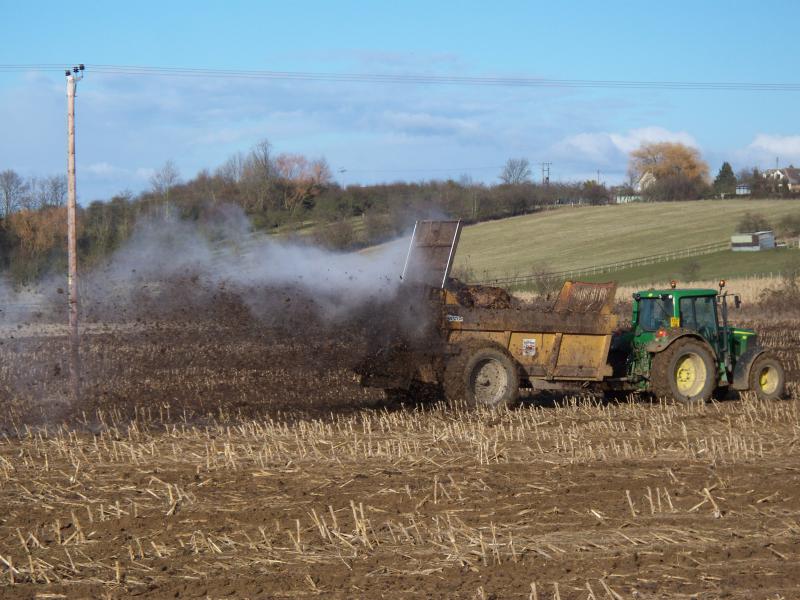
Farmers are being urged to better understand nutrient content to help reduce bagged fertiliser, according to a leading industry expert.
The amount of livestock manure applied in the UK each year would fill all the lanes of the M1, plus the central reservation and hard shoulder from Leeds to London, to a depth of 10 metres.
Speaking at an AHDB Monitor Farm group, John Williams, ADAS principal soil scientist, said approximately 90 million tonnes of livestock manure is applied in the UK each year but questioned whether farmers were making the most of it.
Newark farmer John Miller is one of many who are now working to use less bagged fertiliser on his by taking advantage of organic manure available. He hosts the AHDB Newark Monitor Farm and the group met in December to sort the muck from the magic.
AHDB Monitor Farms bring together groups of farmers who want to improve their businesses by sharing performance information and best practice around a nationwide network of more than 30 host farms.
Monitor Farms are part of AHDB’s wider Farm Excellence Platform, which works with the industry to improve performance through knowledge exchange and benchmarking.
He said: “We’ve always known that organic manure is a good resource. It’s about applying it effectively and taking account of the nutrients in it so you can reduce the amount of inorganic fertiliser you put on.”
John Williams gave steps to maximising nutrient use efficiency. He said farmers should better understand what the crop needs, using the AHDB Nutrient Management Guide, previously known as RB209. Sampling soil to find out what’s in it and what it’s deficient in is also a must.
Farmers are also urged to measure the nutrient content of manures, section 2 of the Nutrient Management Guide gives a good start to this. Top up with bagged fertiliser, if necessary.
True representation
But sampling needs to be done carefully to get a true representation of what’s in the manure.
For example, lagoons should be stirred to homogenise the slurry before spreading with samples taken periodically during store emptying to make sure the analysis provides a good measure of the slurry nutrient content.
Not all manures are the same and manures with a lot of readily-available nitrogen (N) should be handled carefully.
John Williams said: “Digestate is like rocket fuel – handle it with care! Digestate nutrient content reflects the feedstock used in the anaerobic digestion process.”
Food based digestate can contain around 7 kg of total N/m3 (approximately 6 kg/m3 readily available N) and 25m3/ha would supply 175kg N per hectare, so matching application rates to crop demand is vital.
Mr Williams said: “Testing the digestate is the best way of knowing the nutrient content which is essential to make best use of the nutrients.”
As a result of the meeting, John Miller is considering whether he can apply organic manure in the crop rather than before it, to make better use of the nutrients available.
He said: “The cost of buying equipment to spread the manures in crop is fairly prohibitive for me, so I’d probably be looking at getting a contractor to apply it. Perhaps the saving we make in reducing bagged fertiliser would pay for the contractor. And in the long term the increased soil organic matter will hopefully stand us in good stead.”
